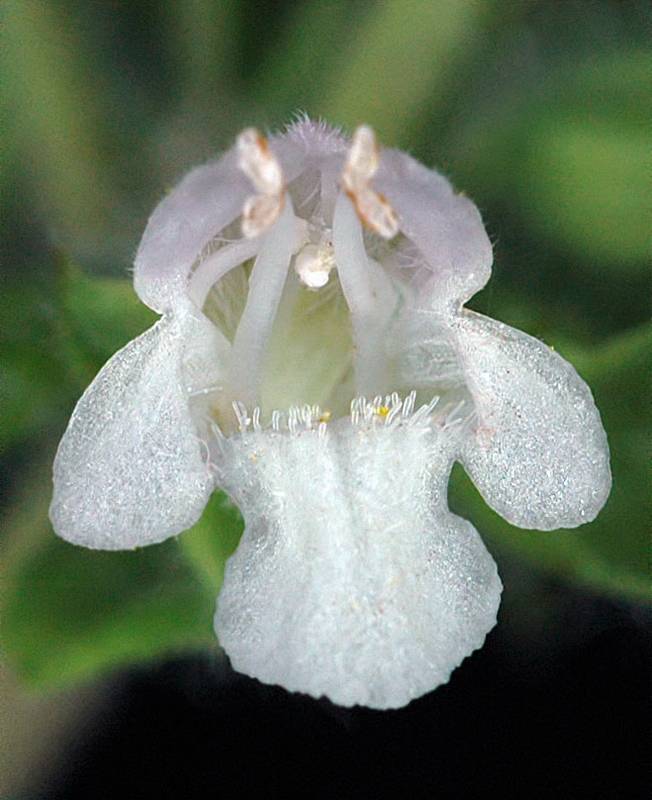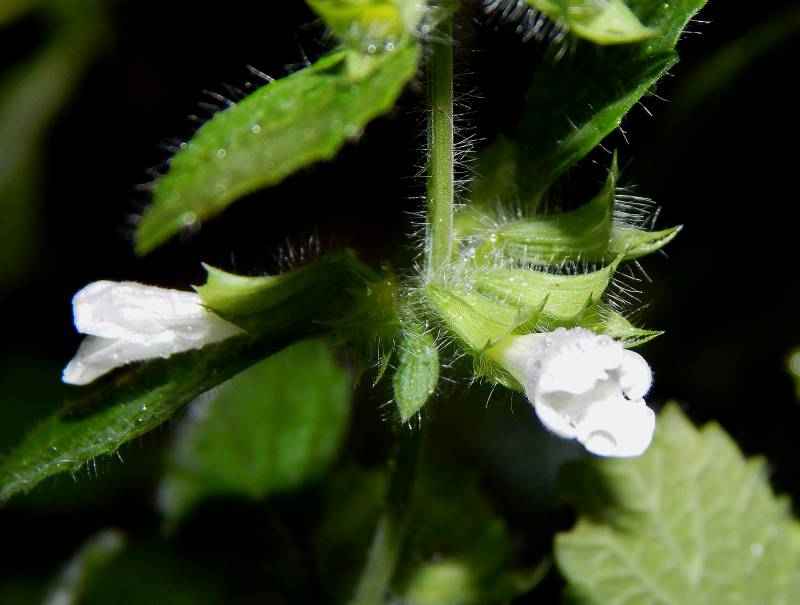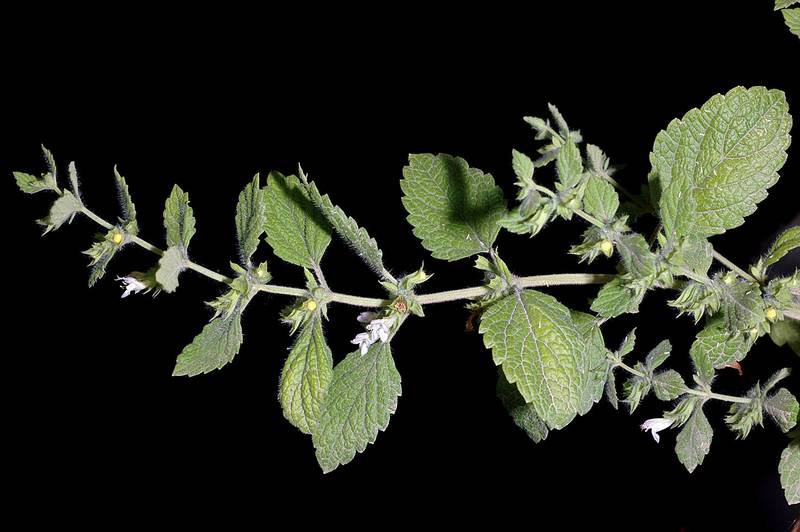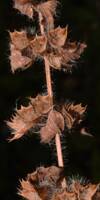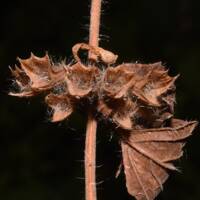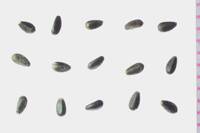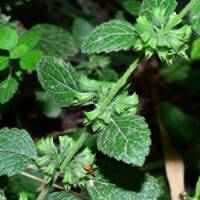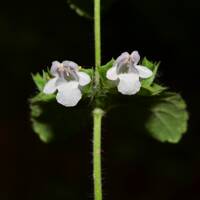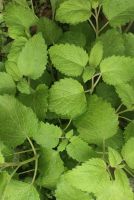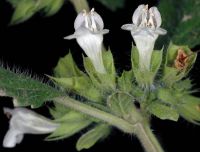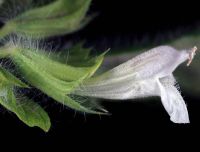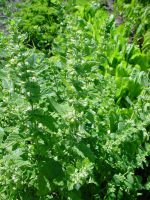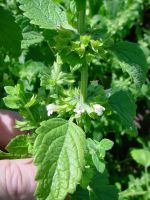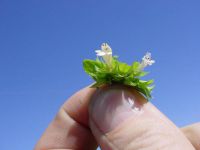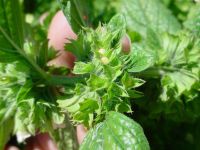Distribution: Occurring chiefly west of the Cascades crest and in the Columbia River Gorge in Washington; Alaska to California, east to Idaho and Montana; also in central and eastern North America.
Habitat: Roadsides and other disturbed habitats.
Flowers: June-August
Origin: Introduced from Eurasia
Growth Duration: Perennial
Conservation Status: Not of concern
Lemon-scented, fibrous-rooted, perennial herb from a woody rhizome, the stem 3-10 dm. tall, usually branched, with fine, gray hairs, and some long, spreading hairs and stalked glands upward.
Leaves opposite, petiolate, the middle cauline ones ovate to deltoid, coarsely blunt-serrate, 4-9 cm. long and 2.5-5 cm. wide; the upper leaves gradually reduced and tapering to a short petiole.
Flowers on short pedicels in small verticels axillary to well-developed leaves; calyx bilabiate, 7-9 mm. long, 13-nerved, the upper lip flat, 3-toothed, the lower deeply 2-cleft, the teeth firm, pointed; corolla white to pinkish to light blue, 10-15 mm. long, bilabiate, the upper lip flat, with a small notch, the lower spreading and 3-lobed; stamens 4, ascending under the upper lip, the lower pair the longer.
Nutlets 4.
Publication: Sp. Pl. 2: 592. 1753.
PNW Herbaria: Specimen records of Melissa officinalis in the Consortium of Pacific Northwest Herbaria database
WA Flora Checklist: Melissa officinalis checklist entry
OregonFlora: Melissa officinalis information
E-Flora BC: Melissa officinalis atlas page
CalPhotos: Melissa officinalis photos

